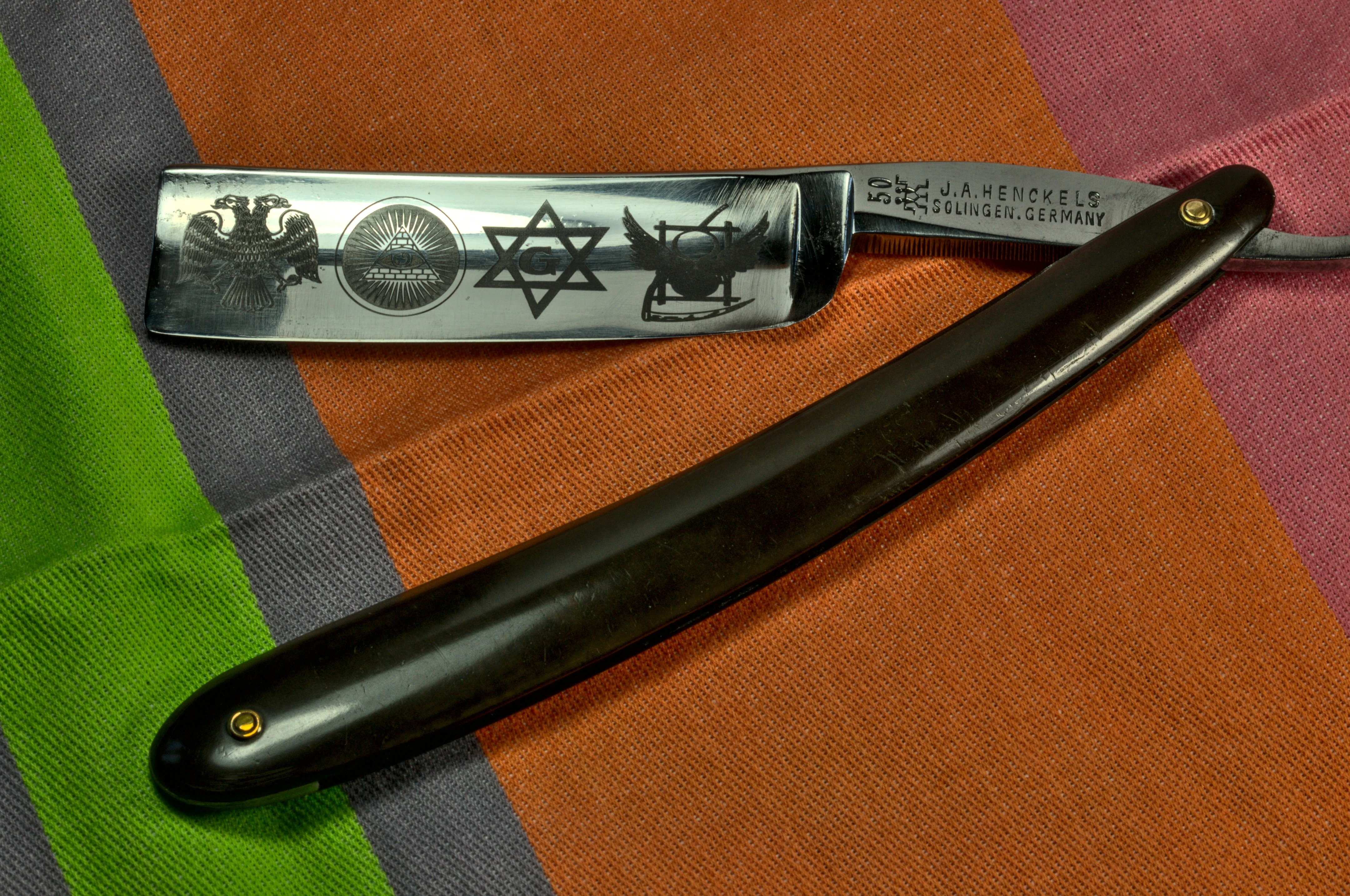So, there is some contradictory information about Friodur razors floating around the interwebs. For instance, according to the text of German Wikipedia (English Wikipedia, the ice-hardening process for hardening stainless steel was invented in 1939 and patented in 1951, but according to the time table in the same article, it was patented in 1939 but the name Friodur was only introduced with the first ice-hardened blades in 1951.
But then I saw a mysterious 7/8 Friodur 50 on eBay with a patent stamp D. R. PAT 41-DL4678.
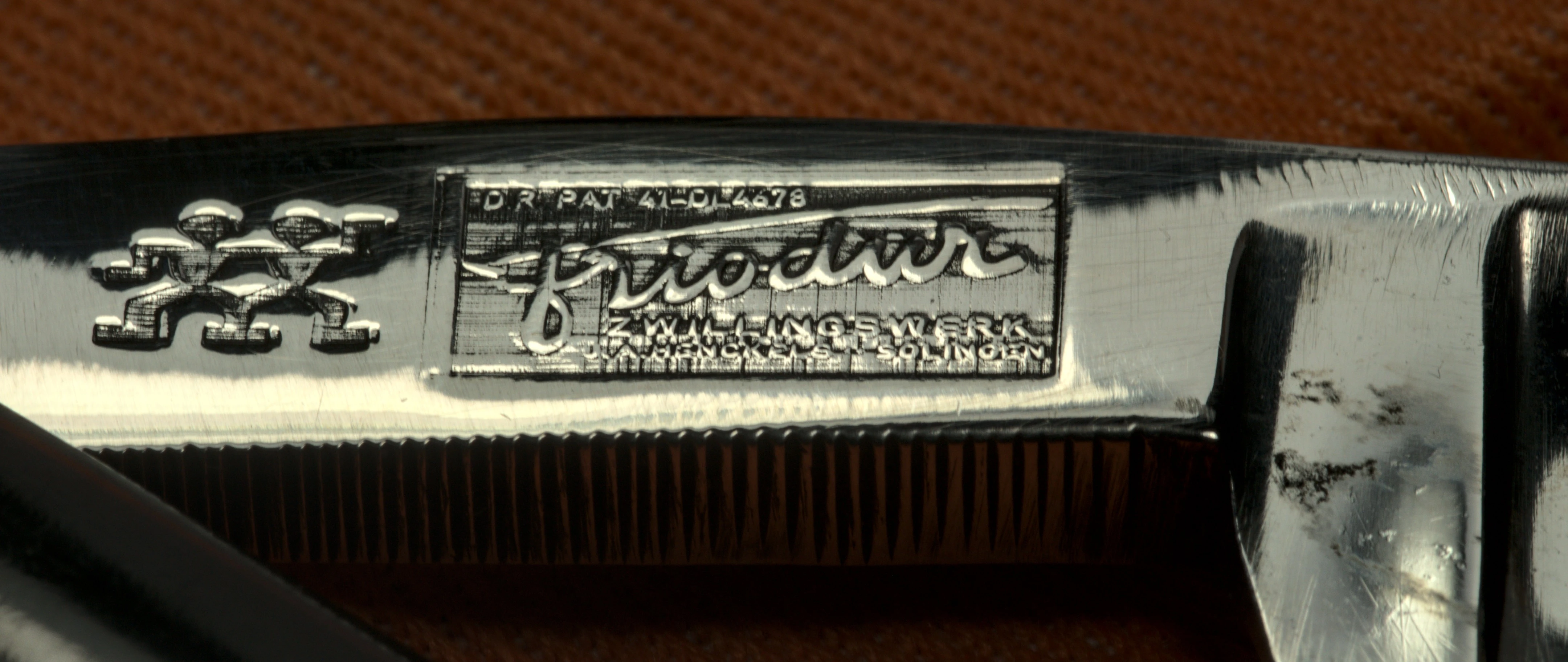
Now I can't find that patent document, but it seems to be a patent stamp from the patent office of the German Reich (presumably of the third kind given that the Friodur name appeared in at the earliest 1939 and the Reich Patent Office was dissolved after the allied victory). So it seems that this is a 1941 Friodur model.
It's also the only Friodur I've ever seen to have etchings on both sides of the blade. Here's the usually blank back side with a big sweeping Friodur logo:
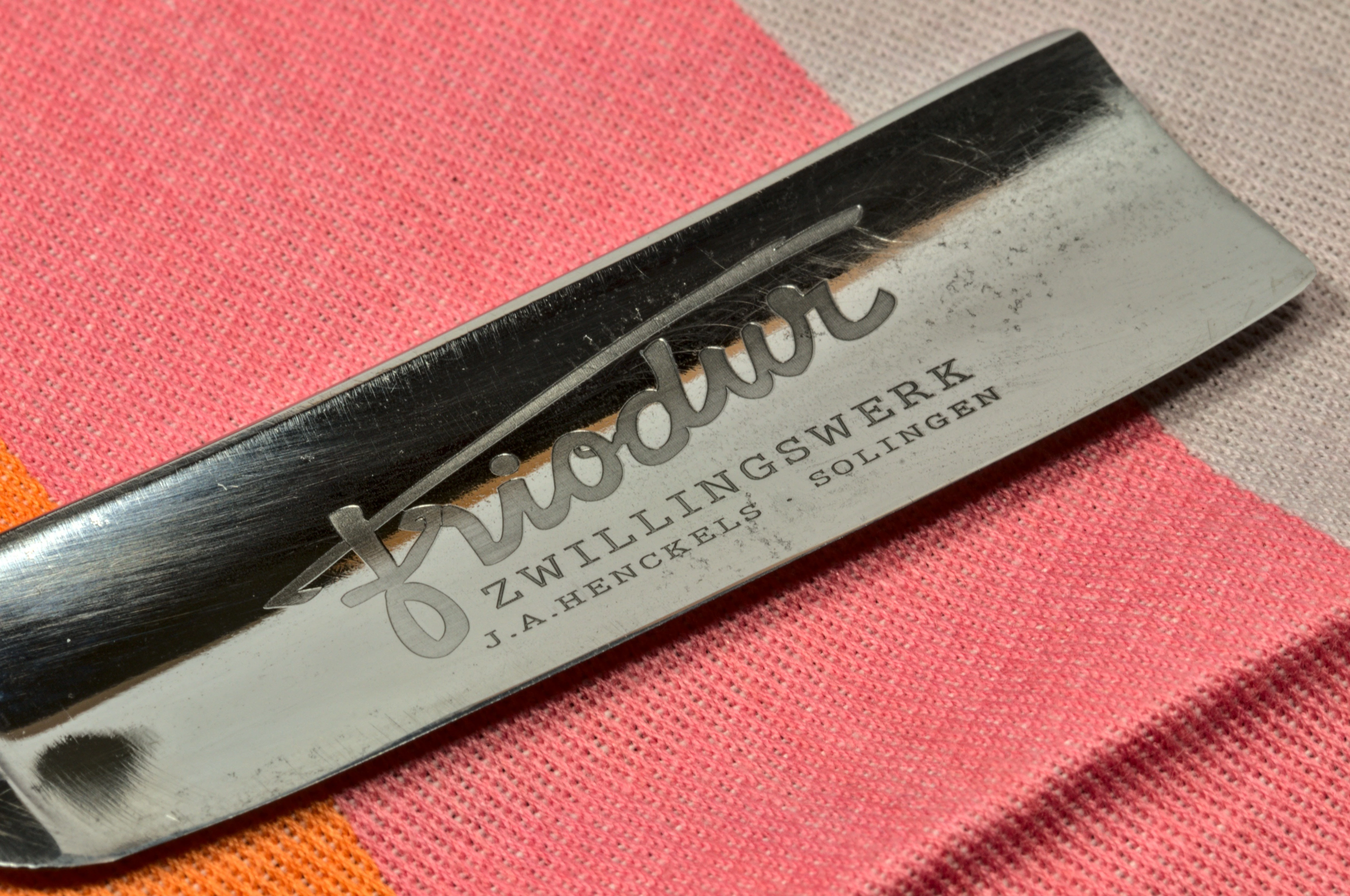
It seems like the early Friodurs made a really big deal of being Friodurs. Must have been expensive razors.
The front side has the typical shank markings of earlier carbon steel Henckels straights (Later Friodurs have the swirly Friodur logo in addition to the Zwilling (twin) logo):
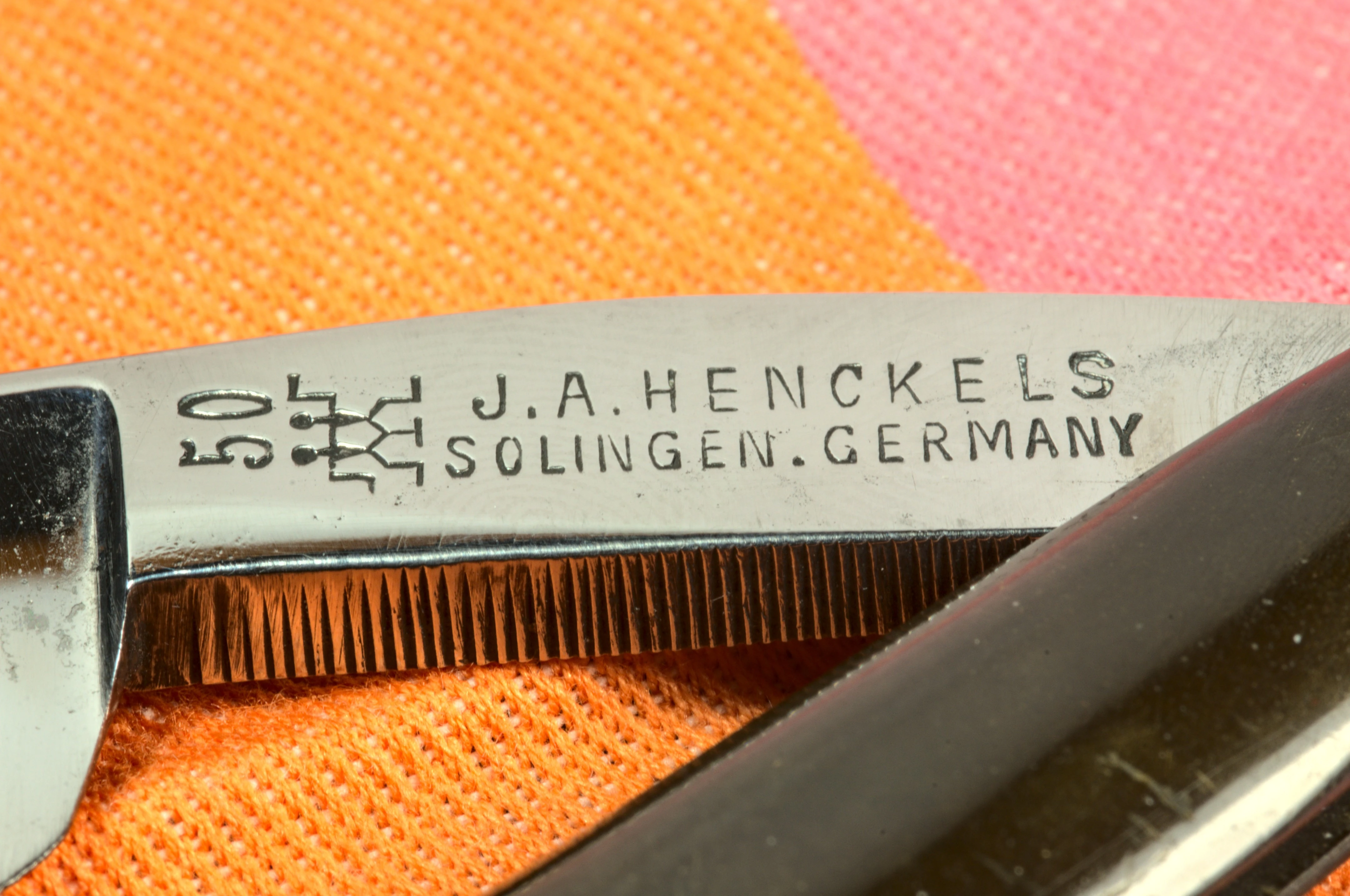
But the really interesting part is the decoration etched into the front face of the blade. First, there's what looks like the double-headed eagle of the Scottish rite of Freemasonry.
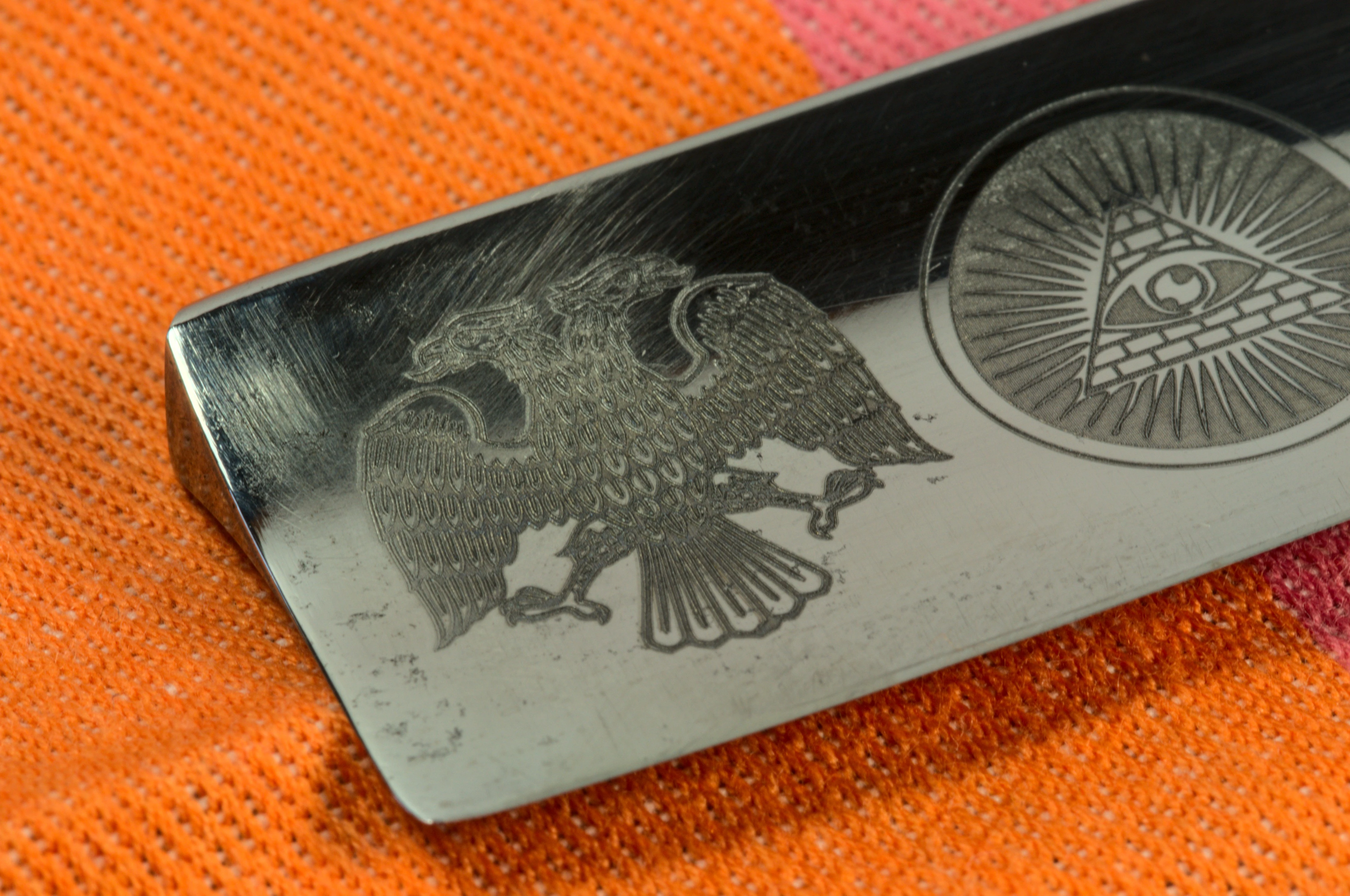
A big Eye of Providence:
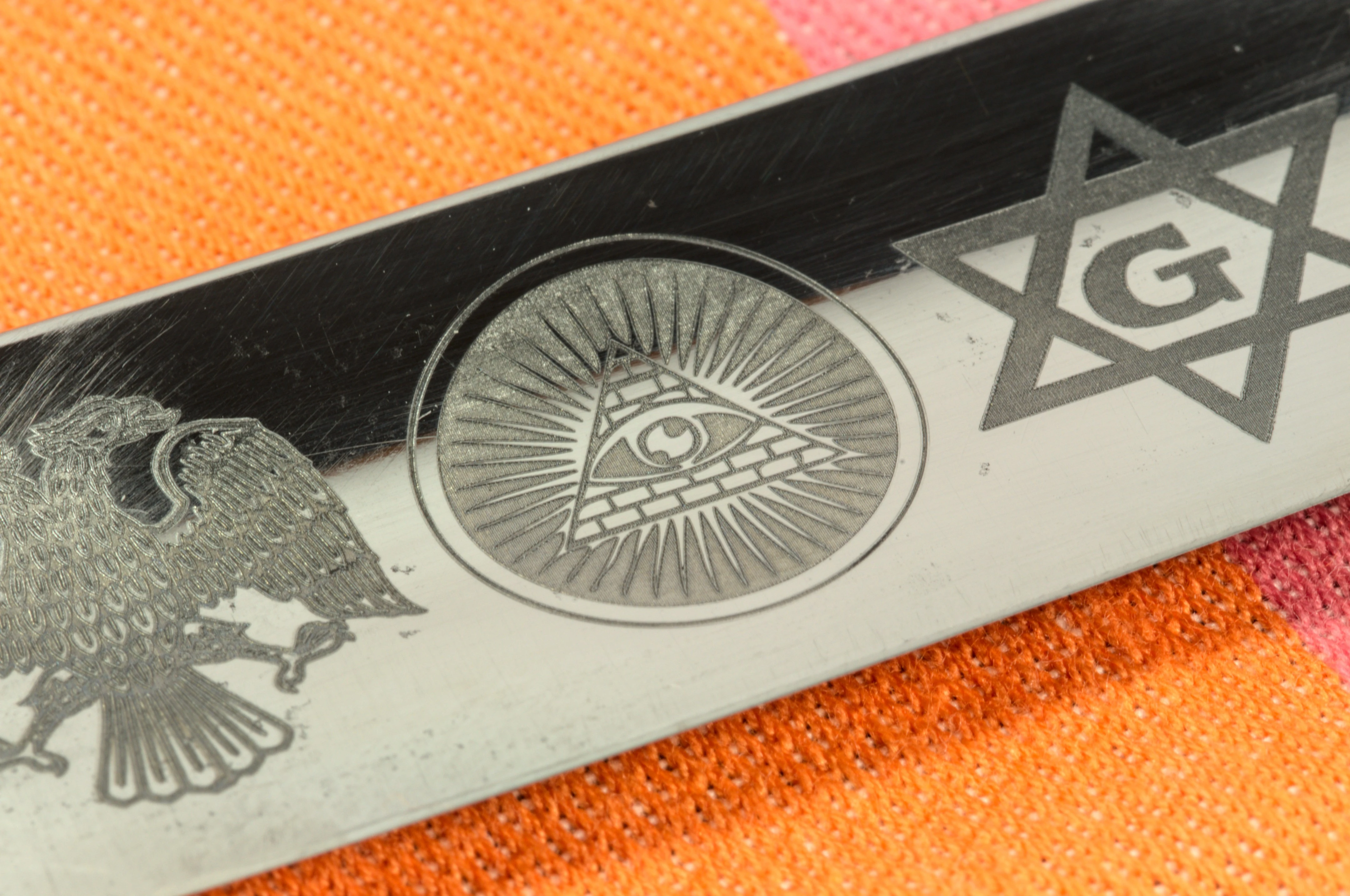
A Freemason's Star (apparently not really a star of David, but a geometric regularization of the square-and-compass symbol of the Freemasons
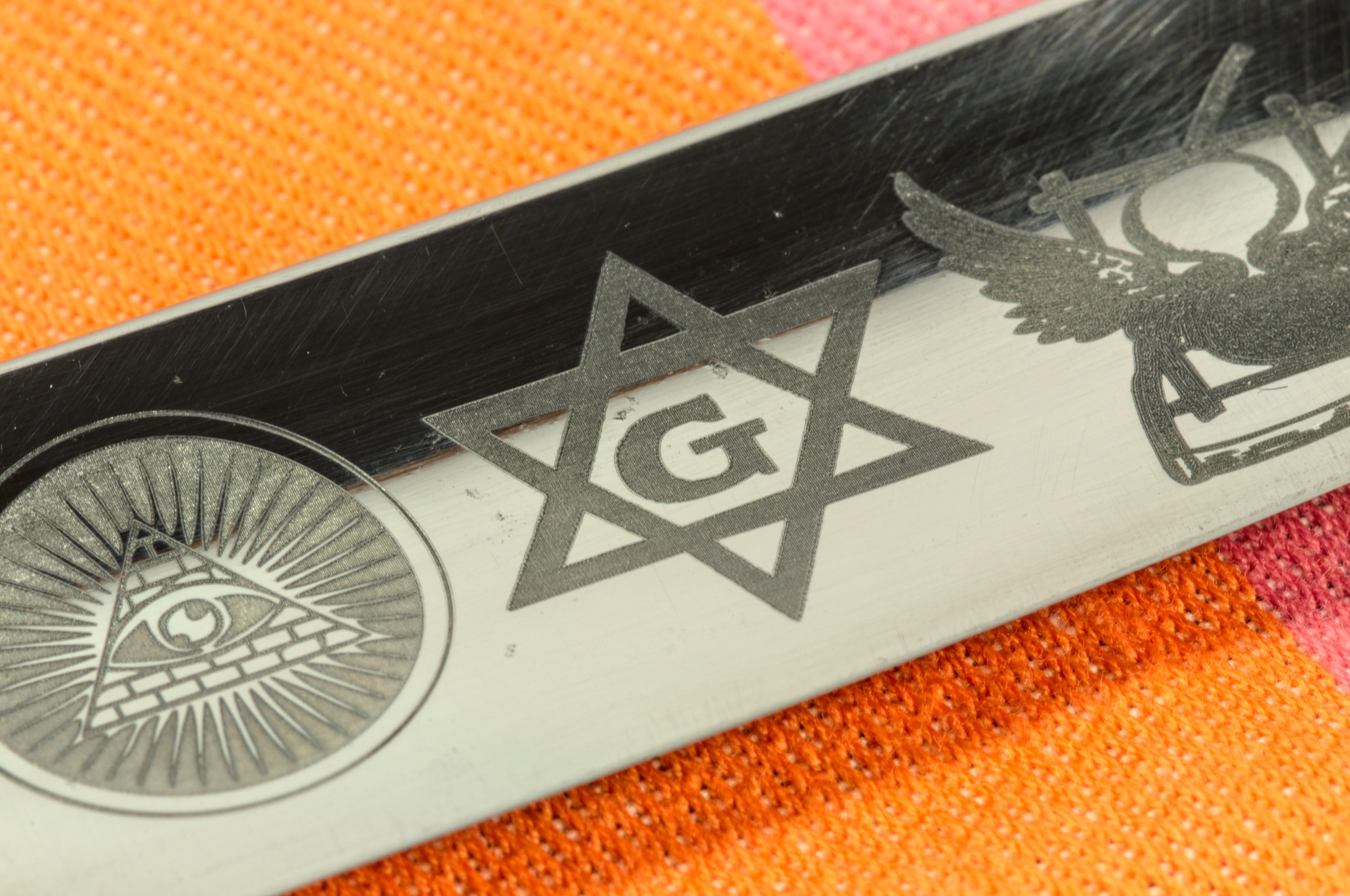
And finally this image I couldn't find information on that doesn't make me want to put on a tinfoil hat. Supposedly a scythe and a winged hourglass symbolising time as the destroyer of humankind's institutions. I will not link to my fishy sources.
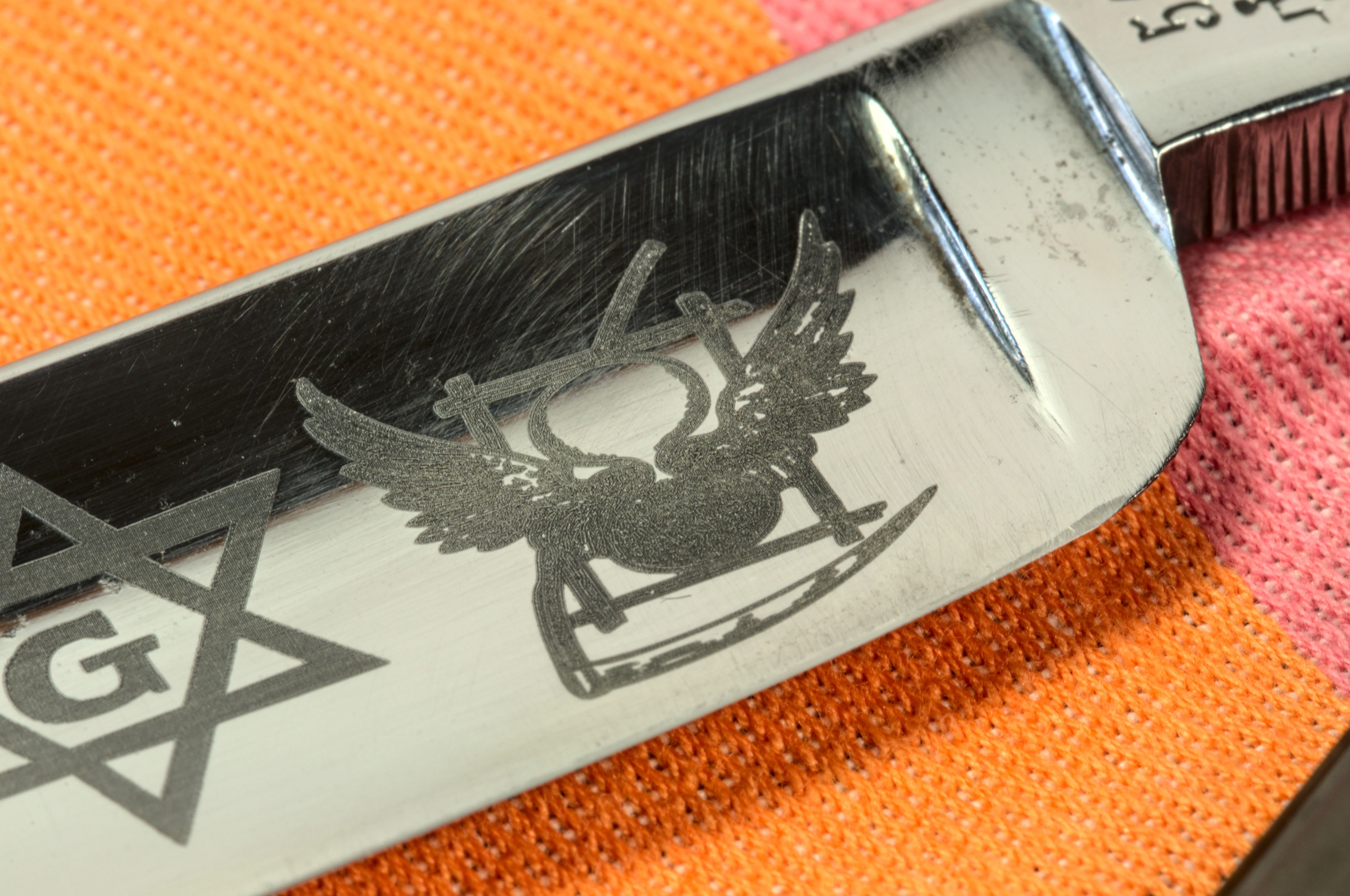
Here's the whole thing! I'm not sure yet whether I think it's pretty, but it's sure interesting!
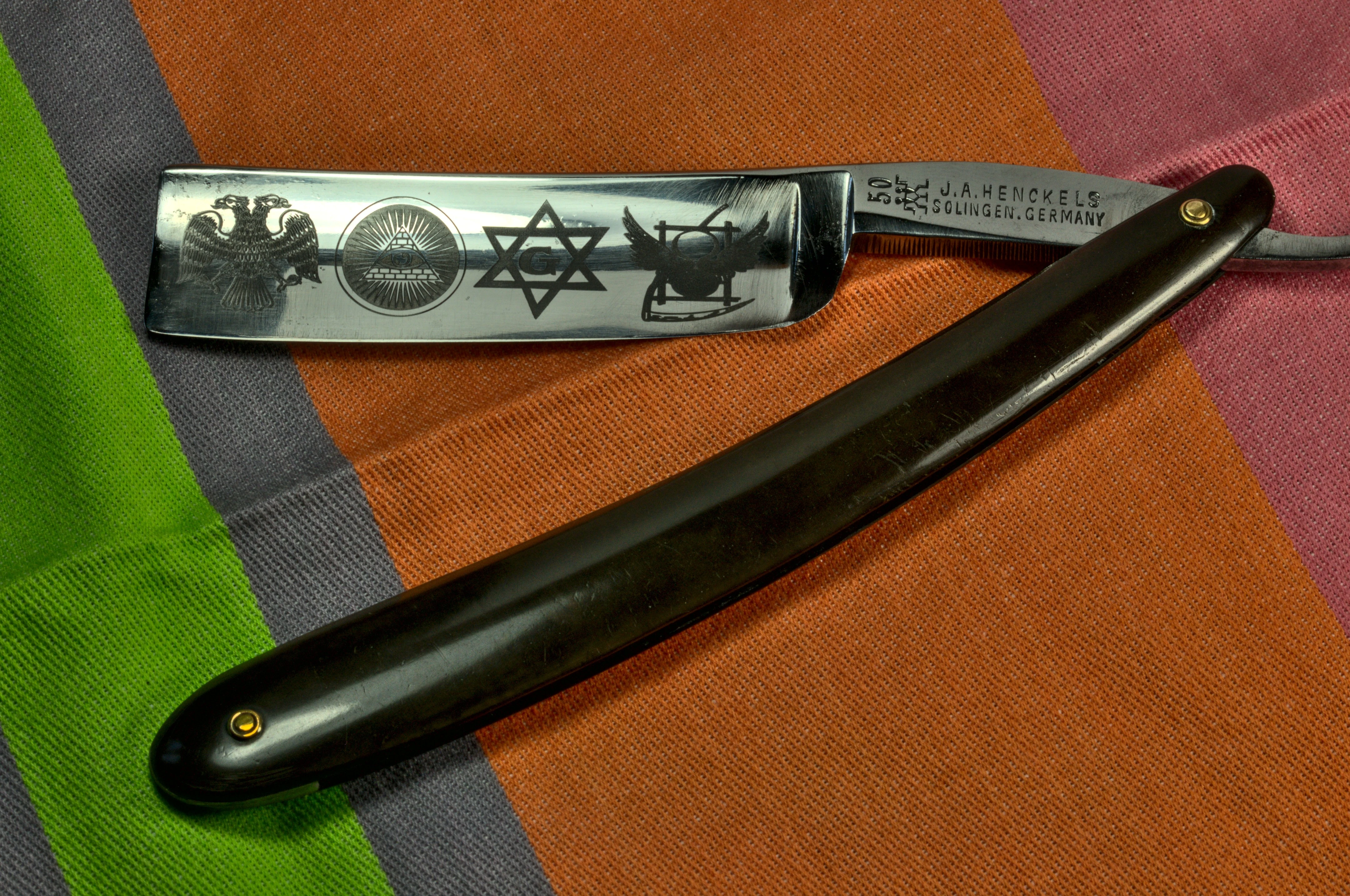
I'm going to hone this puppy to get it ready for Austere August, $FriodomRiders, and $Honemeisterschaft
